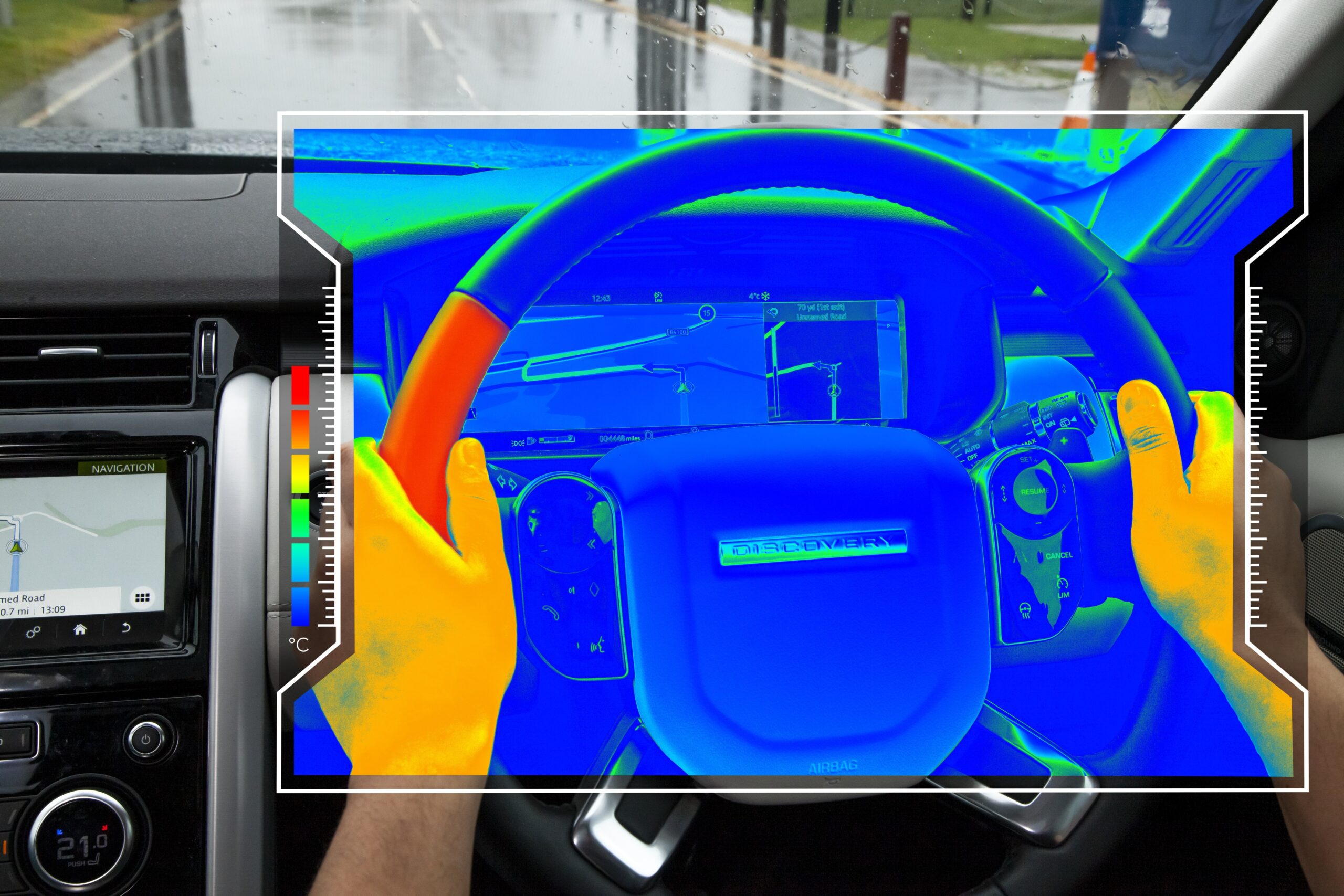
With the UK government stating that it wants fully driverless cars to be on British roads by 2021, much of the innovation in the automotive sphere is focused on this new technology. However, that has not stopped companies investing in tech that still has human drivers at the centre.
In partnership with the University of Glasgow, Jaguar Land Rover has developed a sensory steering wheel that could help drivers keep their eyes on the road.
As cars become smarter, there is also the potential for greater distraction, and according to the National Highway Traffic Safety Administration, distraction accounts for around 10% of fatal crashes in the US.
Land Rover has conducted its own research on this, and has found that changes in temperature could be an effective way of alerting drivers, and as a result, the automotive giant has come up with a sensory steering wheel, designed to use thermal signals to tell drivers when to turn left or right.
How the Land Rover sensory steering wheel works
The steering wheel works by rapidly heating or cooling specific parts in order to alert drivers when to turn, change lanes or let them know when they are approaching a junction. This is intended to minimise the need for drivers to look away from the road in front of them, but also has use cases when visibility is poor due to weather conditions.
The technology could also been incorporated into the gear-shift paddles to indicate when hand over from the driver to autonomous control occurs in future self-driving vehicles.
How well do you really know your competitors?
Access the most comprehensive Company Profiles on the market, powered by GlobalData. Save hours of research. Gain competitive edge.

Thank you!
Your download email will arrive shortly
Not ready to buy yet? Download a free sample
We are confident about the unique quality of our Company Profiles. However, we want you to make the most beneficial decision for your business, so we offer a free sample that you can download by submitting the below form
By GlobalDataAccording to a study by the University of Glasgow, temperature-based instructions are also an effective way of delivering non-urgent notifications, for example as a warning when fuel is running low, or for upcoming events. Therefore the technology could be incorporated into other parts of the car’s system.
Alexandros Mouzakitis, Jaguar Land Rover Electrical Research Senior Manager, said:
“The ‘sensory steering wheel’ is all part of this vision, with thermal cues able to reduce the amount of time drivers have to take their eyes off the road.
“Research has shown people readily understand the heating and cooling dynamics to denote directions and the subtlety of temperature change can be perfect for certain feedback that doesn’t require a more intrusive audio or vibration-based cue.”
This feature is part of the Advanced Driver Assistance Systems (ADAS), developed by Land Rover to improve driver and vehicle safety, which also includes capacitive steering wheel controls that combine with the Interactive Driver Display to help reduce driver distraction.







